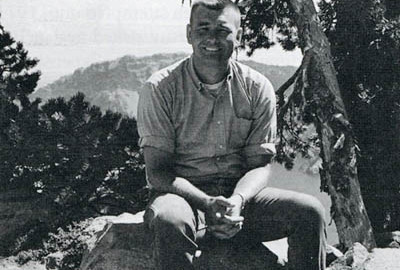I bet it made some difference that Mark Forbes was there. He was just hired that year [1978] (18).
Mark was very supportive. Sholly was kind of a wild man, as an ex-Marine [who served in] Vietnam.
Did your Marine Corps background help you interact with Sholly?
Not at all. I don’t think we even talked about the Marine Corps. As far as I’m concerned, there was nothing much to talk about. I kind of liked Sholly. I thought he’s kind of unusual for a Park Service employee because he takes risks. One time they went down the snow chute during the winter and crossed the lake to a cabin located on the other side over by Wineglass and stayed overnight. I thought this was really risky without survival suits on. I wouldn’t do that.
The Park Service asked the Corps of Engineers if they could spare me for 10 percent of my time. They worked out an interagency agreement where I would spend 10 percent of my time working on Crater Lake stuff, either in the field or in my office. The Park Service would then reimburse the Corps for my time. I think this arrangement started in 1981. I was a VIP in ’78, ’79, ’80 and maybe ’81, and then I was on a paid status in maybe ’82, ’83, and ’84, something like that. That’s how it worked out, and 1’11 say more [a little later in the interview] about why the park decided they needed a monitoring and research program.
Who among the park staff did you work with after 1978?
I can’t remember all the names, but certainly Mark Forbes and Sholly were there. Jim Rouse was the superintendent. John Salinas was there and so was a Mike Gilmore.
Do you recall Roger Rudolph?
I vaguely remember him (19). I remember that I enjoyed talking with him. I’m trying to think of a couple others.


